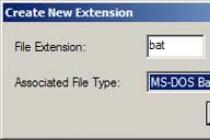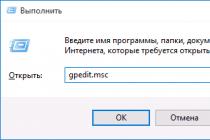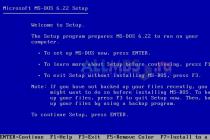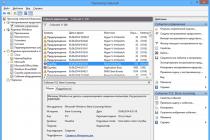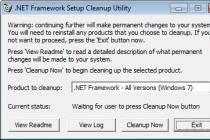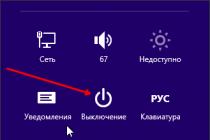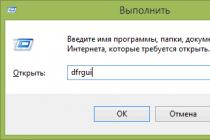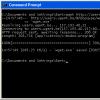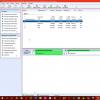Google did a pretty good job on the functionality of Android 4.0 Ice Cream Sandwich, as well as on the appearance of both the system and programs. However, this does not prevent manufacturers of smartphones and tablets with maniacal persistence to "finish" the system, seriously changing its various aspects. If we talk about customization by the user, then here Android seems to be one of the most flexible (if not the most flexible) mobile systems.
The material below will be of interest to those who have recently become familiar with Android, in particular version 4.0. We will consider the methods using the example of the Highscreen Alpha GT, which has good characteristics uncharacteristic of dual-symbol devices and the current version of the Google system. For those who have been using the system for a long time, we recall that the process of installing and managing programs by default has remained unchanged since the days of Android 2.3.
So, we have read tips for choosing a powerful video player, PDF viewer, SMS manager and any other program. Next, we went to Google Play or downloaded the installation APK file on a site like w3bsit3-dns.com. How can we make our default program be used for a specific action? Let's take a PDF viewer as an example. So, we already have Adobe Reader, but I would like, without deleting this development, to open files only using the PDF Reader program.
Method one, banal. We launch the file manager and “tap” on the desired magazine. Since Adobe Reader has a "competitor", we will see a pop-up window with the caption "What to use?" (or some other similar one, there may be options here) and a choice of programs possible to open the file.
If we want to permanently bind to the PDF format, we must first check the box next to “Default for this action” and select PDF Reader. Everything, with minimal effort, a new default PDF viewer is set.
Method two, retribution for inattention. Let's say the program selection window appeared, we checked the box, but accidentally indicated not PDF Reader, but Adobe Reader. Get upset early, we will correct the error. We call the system item “Settings” (I hope you don’t need to explain how to find it), “Applications” and click on Adobe Reader to open the settings for this program. Scroll down the list to the heading "Run by default". Here we see the item "Delete default settings".
Click and thereby reset the binding to PDF files. Now, when trying to open a PDF magazine, we will again be offered a list of programs, where we will select PDF Reader. profit.
Particulars. I note that in the list of installed applications, Android provides a complete list of system programs, so there should be no problems when choosing a PDF viewer, or when replacing the gallery, dialer or launcher. The first particular point is the program for dialing and managing contacts. In it, the default setting means automatic launch instead of the standard application when there is an incoming call. However, forgive me for the banality, if you need to dial a number, then you need to manually tap on the icon of the alternative application. Therefore, simply drag its shortcut to the desktop or replace it with the icon of the standard program on the bottom panel of the desktop.
Other particular– replacement of the standard keyboard. After installing the new keyboard, go to "Settings", "Language and input", activate it with a checkmark opposite and at the top click on the default keyboard selection button.
Another way - in the process of entering text at the very top of the screen, with a sliding movement from top to bottom, we call the item "Select input method". As you can see, nothing complicated.
Finally I will say that Google Play naturally could not do without special default program management managers. As an example, I will point to the free Default App Manager Lite. This program provides a list of popular tasks such as browser, camera, music and others, the currently selected application is immediately shown. By touching the item, we get a list of programs available for action, then a) easily / naturally click "Clear Defaults" b) in the window that appears, uncheck the familiar item "Delete default settings" c) press the return key to the previous screen d) press "Set Defaults" e) check "Default for this action" and select the desired program.
We have studied the basics of the basics, if you have any questions - write in the comments, we will figure it out.
PC users often come across the term "default" when describing software settings. It would seem that an understandable term that does not require a “translation” into Russian, nevertheless, upon closer examination, turns out to be incomprehensible. Indeed, what does "default" mean? And is it possible to use the "default" software mode of operation? Let's try to figure this out.
Many modern application programs used on personal computers are multifunctional, have many features, not all of which are used in practice by all PC users.
You can study MS Office applications indefinitely, and each time you will discover new and new opportunities for editing and processing texts (Microsoft Word), spreadsheets (Microsoft Excel), presentations (Microsoft Power Point), etc. The same can be said for any other programs.
The above means that modern software is very redundant in terms of its functions. This redundancy is needed in order to provide PC users with a variety of information processing capabilities. For programmers who create this software, which is redundant in terms of its functionality, this means that it is necessary to foresee many options for data processing at the stage of writing programs. And all these options need to be incorporated into application programs, as well as provide convenient opportunities for their use.
The variability of the software is convenient in that the user is provided with many options that are often not used by them. The downside of this coin is that there are a lot of settings that need to be made before using the software. Indeed, if the software allows a lot of things, and the user needs to use only a part of the provided opportunities, then you need to somehow indicate to the program what, in fact, the user is interested in in this particular case.
In order to simplify software customization, programmers use the default mode. Let's look at the logic of programmers when they create (or, as they say, write) a program. Programmers proceed from the fact that in each specific case of the program operation, the following 2 options are possible:
- the program in this particular case can perform only one action,
- and the program can perform more than one action.
There are usually no other options. Where there is only one action, the programmer programs it. But where there are several actions, the programmer must write the program in such a way that it asks the user about what to do at this particular moment, or automatically selects one of the possible options.
In the second case, they say that the programmer has set the program to work in the default mode, i.e. the programmer himself, without the participation of users, determined which of the possible options the program should work in this particular case.
Determining when a program can do one single action and when there can be several such options is quite difficult. Let's consider this using the example of moving the mouse cursor using the "mouse" manipulator. If the user moves the mouse, it would seem that the only possible reaction to this is for the programmer to set the mouse cursor to move around the Windows desktop screen. It seems to be the only action.
But after all, you can move the cursor around the screen at different speeds. One user likes the high speed of moving the mouse cursor across the desktop in response to small movements of the mouse on the real desktop.
It is more convenient for another user if the cursor movement speed is slower, and someone likes to work completely “with a brake”. Accordingly, this movement speed can be adjusted (adjusted) in the mouse settings (for Windows XP, this is regulated: "Start" - "Settings" - "Control Panel" - "Mouse" - "Pointer Options" - "Set the speed of the pointer movement").
But after the first installation of Windows or after the first connection of a new mouse to the USB port of the PC, the cursor of the mesh pointer starts moving at some “average” speed, and the PC user did not specify anything in the settings. This is what is called the "default" settings. That is, programmers have already set up the software to perform certain functions in advance, while there can be a great variety of possible options for performing these functions.
Defaults make things easier for PC users, especially novice users. Defaults allow you to create a friendly interface for software, making the process of using programs convenient and comfortable.
Imagine for a moment what would happen if, in all cases of multiple decision making, the software would ask the user questions? "Do you want to move the mouse cursor to the right? Are you sure about that? With what speed should this movement be carried out? - this is from the area of anti-friendly interface.
But defaults are fraught with problems for users. If the user works with the software solely on the basis of the defaults prepared by the programmer, then in this way the user deliberately restricts himself in the use of many other features embedded in the programs.
For example, when working with the mouse manipulator, the user can not only adjust the speed of the cursor, but also adjust the accuracy of the pointer, its appearance, the ability to apply special effects when moving the pointer, adjust the speed of movement by rotating the mouse wheel, change the assignment of mouse buttons, etc. .P.
Not always programmers put defaults in their programs. Sometimes they fail. For example, try to create a new document in the Microsoft Office program (the main menu button is “Create”), enter any text (even if it consists of one word) into the new “clean” document, and then try to save this “new” text using the menu "Save" (Main menu button - "Save" or move the mouse cursor to the floppy image and click the left mouse button).
Alas, the document will not be automatically saved, in this case only the “Save As” option will work and the user will be prompted to specify the file name, its location in the file system, the file extension option and other parameters.
Another thing is when the user opens a previously created file using the Microsoft Office program. In this case, after any editing of this file, pressing the floppy disk icon (or the Main menu button - "Save") will save the changes in the same file under the same name that was originally opened.
The above example with the Microsoft Word program shows that default modes can be defined by programmers only where these defaults can be in principle.
If the programmer does not know in advance what the name of the new file created for the first time using Microsoft Word will be called, then he does not set this “by default”, but programs in such a way that the program in this case would necessarily display a question for the user and offer the user to make their own responsible decision.
Novice users should be attentive to the actions of the software in the "default" mode. They need to understand whether the actions of the software are the only possible ones and do not involve any settings, or if this is one of the possible actions of the program, behind which lie various settings and pointers that allow you to expand the capabilities of the PC software.
It can even be said that the differences between advanced PC users and novice users largely consist precisely in understanding the actions of the software in the “default” mode. Novice users often do not understand whether they use all the features of the software to solve their problems using a computer.
And experienced users have studied in detail and learned how to put into practice all kinds of software settings (both application and system), and thus sometimes more effectively use the opportunities provided.
At the same time, I would not like the default modes to be perceived only as a means for novice users. Quite often, “advanced” users use defaults, not all of them constantly configure and reconfigure the software, and not all of them “advance” only due to this.
Settings are good, but besides this, there are many other possibilities: the program menu, icons and buttons for managing programs, the context menu (for example, by pressing the right mouse button), managing programs using the keyboard or using the mouse and keyboard together, etc. P. All this expands the possibilities of using the PC, and "promotes" users from the category of beginners to the category of "advanced".
Now let's look at some examples of defaults used when working with a PC. We have already talked about the mouse. Similarly, you can configure the keyboard, or use the parameters that were set by default.
All other devices connected to a PC or located inside a PC work in exactly the same way - they can work in the "default" mode or they can be configured, as a rule, through the "Control Panel".
Another example. Files in Windows are usually shown as a file name without a file extension. For example, the file name Name.docx will show the name Name, but the extension .docx will be hidden. Each file must have a name, and almost always (though not always) have an extension.
File name extensions are not shown by default on Windows. This is done for the benefit of users. If you change file extensions “like gloves”, then Windows will sooner or later face the problem of opening files, that is, which program can open a file with an extension that is unfamiliar to Windows.
How to change the default settings so that Windows shows file extensions is described:
Based on the file extension, Windows automatically determines the default program designed to process the given file. However, this file can be processed by more than just the default program. Often several programs can be used to process the same file.
It is enough to right-click near the file icon and the context menu will see options, for example, "Open" or "open with ...". The second option allows you to select a program other than the default program to edit the file.
Or another example. To search for information on the Internet, users can use different browsers: from the standard Microsoft Internet Explorer to Google Chrome. The user chooses a browser on his own, if he initially launches it on a PC, and then starts the search.
However, the link to the Internet page may be received by the user by e-mail, or this link may be published in some file on the user's computer. In this case, which of the installed browsers should be used in order to follow this link? And Windows chooses the "default" browser. And these defaults are set through the "Control Panel", or using the settings of the browsers themselves, if these settings allow you to declare the browser as a program for working with Internet pages by default.
The examples of defaults in software are endless, since this approach is a common practice for programmers when writing both application and system software. Programmers are silent about how it is possible in each specific case to change the course of the program, optimize its execution, improve the interface, increase performance, and so on.
But they do this not in order to “hide” the settings from users, but so that users can work both in the “default” mode and by deliberately changing the software settings.
2005-01-03T00:00:00+01:00Often, by double-clicking on any of the files, we know exactly what will happen next. For example, if we want to open a file with the extension . doc, it will open in the Word editor, if one is installed on the computer, of course.
Much less often there is a need to use the context menu, i.e. right-click on the file and select some other action than the default action.
But, there are several types of files, the default action for which poses a certain risk to the computer. These are, for example, files with the extension . bat(executable) and . reg(making changes to the Windows registry).
bat- this is open. If we double click on a file with the extension . bat, the commands specified in this file will be executed.
The default action for the file. reg — Merge. Double-clicking will make changes to the registry specified in this file.
In order to avoid possible troubles when working with such files, we need to change the default action for these types of files.
The procedure for changing the default action in Windows XP is described below.
Open any folder, select the menu Tools and Folder Options.

In the tab File Types we find in the list of extensions the extension we need, for example. reg.

As we can see, by default, files of this type are opened using the registry editor, Open with: Registry Editor.
Click on Advanced, choose an action Edit and set it to the default action, .

Action Edit became bold. Now, when double-clicking on a file with the extension . reg it will open for editing in notepad, Notepad.
The same procedure is recommended for files with the extension . bat
On Windows XP, you may not find it in the list File Types extensions bat, since this is an extension for MS-DOS files, and Windows XP, as you know, has practically nothing to do with DOS. So we will add this extension manually by selecting the option New
Choosing a new extension bat Windows will prompt you to associate it with MS-DOS executables. After that, as in the previous case, set the default action for files of this type Edit.

You may want to change the default action for files and other types, now you know how.
Users of computers and devices that replace them often come across the term "default" used to describe software settings. They have a question: what does it mean by default?
It would seem that an understandable term that does not require a “translation” into Russian, nevertheless, upon closer examination, turns out to be incomprehensible.
Let's try to figure this out. Is it possible to use the "default" software operation mode?
Why default settings are needed
Many modern application programs used on personal computers are multifunctional, have many features, not all of which are used in practice by all PC users.
You can endlessly study MS Office applications, and each time you will open up new and new opportunities for editing and processing word (Microsoft), spreadsheets (Microsoft Excel), presentations (Microsoft Power Point), etc. The same can be said for any other programs: browsers, Skype, etc.
The above means that it is very redundant in terms of its functions. This redundancy is needed in order to provide PC users with a variety of information processing capabilities. For programmers who create this software, which is redundant in terms of its functionality, this means that it is necessary to foresee many options for data processing at the stage of writing programs. And all these options need to be incorporated into application programs, as well as provide convenient opportunities for their use.
The variability of the software is convenient in that the user is provided with many options that are often not used by them. The downside of this coin is that there are a lot of settings that need to be made before using the software. Indeed, if the software allows a lot of things, and the user needs to use only a part of the provided opportunities, then you need to somehow indicate to the program what, in fact, the user is interested in in this particular case.
In order to simplify software customization, programmers use the default mode.
What does default mean
Let's look at the logic of programmers when they create (or, as they say, write) a program. Programmers proceed from the fact that in each specific case of the program operation, the following 2 options are possible:
- the program in this particular case can perform only one action,
- and the program can perform more than one action.
There are usually no other options. Where there is only one action, the programmer programs it. But where there are several actions, the programmer must write the program in such a way that it asks the user about what to do at this particular moment, or the program itself automatically chooses one of the possible options.
In the second case, they say that the programmer has set the program to work in the default mode, i.e. the programmer himself, without the participation of users, determined which of the possible options the program should work in this particular case.
If the program automatically selects one of the possible options for working in a particular case, then this means that such settings were set by the developer of this program, these are the default settings. The user, with skill and desire, can change them to others.

Harder for the programmer, easier for the user
Determining when a program can do one single action and when there can be several such options is quite difficult. Let's consider this using the example of moving the mouse cursor using the " " manipulator. If the user moves the mouse, it would seem that the only possible reaction to this is for the programmer to set the mouse cursor to move around the Windows desktop screen. It seems to be the only action.
But after all, you can move the cursor around the screen at different speeds. One user likes the high speed of moving the mouse cursor across the desktop in response to small movements of the mouse on the real desktop.
It is more convenient for another user if the cursor movement speed is slower, and someone likes to work completely “with a brake”. Accordingly, this movement speed can be configured (adjusted) in the mouse settings (for Windows XP, this is regulated: "Start" - "Settings" - "Control Panel" - "Mouse" - "Pointer Options" - "Set the speed of the pointer movement").
But after the first installation of Windows or after the first connection of a new PC mouse, the cursor of the mesh pointer starts moving at some “average” speed, and at the same time the PC user did not specify anything in the settings.
This is what is called the "default" settings. That is, programmers have already set up the software to perform certain functions in advance, while there can be a great variety of possible options for performing these functions.
Pros and cons of default
Defaults make things easier for PC users, especially novice users. They allow you to create a user-friendly interface for software, making the process of using programs convenient and comfortable. At the same time, users do not know what the default means.
Imagine for a moment what would happen if, in all cases of multiplicity of decision making, the software would ask the user questions:
- Do you want to move the mouse cursor to the right?
- Are you sure about that?
- What is the speed of this movement?
- this is from the area of \u200b\u200bthe anti-friendly interface.
But defaults are fraught with problems for users. If the user works with the software solely on the basis of the defaults prepared by the programmer, then in this way the user deliberately restricts himself in the use of many other features embedded in the programs.
For example, when working with the mouse manipulator, the user can not only adjust the speed of the cursor, but also adjust the accuracy of the pointer, its appearance, the ability to apply special effects when moving the pointer, adjust the speed of movement by rotating the mouse wheel, change the assignment of mouse buttons, etc. .P.
When Silence Is Impossible
Not always programmers put defaults in their programs. Sometimes they fail. For example, try to create a new document in the Microsoft Office program (the main menu button is “Create”), enter any text (even if it consists of one word) into the new “clean” document, and then try to save this “new” text using the menu "Save" (Main menu button - "Save" or move the mouse cursor to the floppy image and click the left mouse button).
Alas, the document will not be automatically saved, in this case only the “Save As” option will work and the user will be prompted to specify the file name, its location in the file system, the file extension option and other parameters.
Another thing is when the user opens a previously created file using the Microsoft Office program. In this case, after any editing of this file, pressing the floppy disk icon (or the Main menu button - "Save") will save the changes in the same file under the same name that was originally opened.
The above example with the Microsoft Word program shows that default modes can be defined by programmers only where these defaults can be in principle.
If the programmer does not know in advance what the name of the new file created for the first time using Microsoft Word will be called, then he does not set this “by default”, but programs in such a way that the program in this case would necessarily display a question for the user and offer the user to make their own responsible decision.

To change the default settings or not to change?
Novice users should be attentive to the actions of the software in the "default" mode. They need to understand whether the actions of the software are the only possible ones and do not involve any settings, or if this is one of the possible actions of the program, behind which lie various settings and pointers that allow you to expand the capabilities of the PC software.
It can even be said that the differences between advanced PC users and novice users largely consist precisely in understanding the actions of the software in the “default” mode. Novice users often do not understand whether they use all the features of the software to solve their problems using a computer.
And experienced users have studied in detail and learned how to put into practice all kinds of software settings (both application and system), and thus sometimes more effectively use the opportunities provided.
At the same time, I would not like the default modes to be perceived only as a means for novice users. Quite often, “advanced” users use defaults, not all of them constantly configure and reconfigure the software, and not all of them “advance” only due to this.
The settings are good, but there are many other possibilities besides this: the program menu, icons and buttons for managing programs, the context menu (for example, by pressing the right mouse button), managing programs using the keyboard, or so on. All this expands the possibilities of using the PC, and "promotes" users from the category of beginners to the category of "advanced".
Default examples
Now let's look at some examples of defaults used when working with a PC. We have already talked about the mouse. Similarly, you can configure the keyboard, or use the parameters that were set by default.
All other devices connected to a PC or located inside a PC work in exactly the same way - they can work in the "default" mode or they can be configured, as a rule, through the "Control Panel".
Default in filenames
Files in Windows are usually shown as a file name without a file extension. For example, Name.docx will show the name Name, but the .docx extension will be hidden. Each file must have a name, and almost always (though not always) have an extension.
File name extensions are not shown by default on Windows. This is done for the benefit of users. If you change file extensions “like gloves”, then Windows will sooner or later face the problem of opening files, that is, which program can open a file with an extension that is unfamiliar to Windows.
How to make Windows show file extensions is described.
Based on the file extension, Windows automatically determines the default program designed to process the given file. However, this file can be processed by more than just the default program. Often several programs can be used to process the same file.
It is enough to right-click near the file icon and the context menu will see options, for example, "Open" or "Open with ...". The second option provides a program other than the default program to edit the file.

Default browser
To search for information on the Internet, users can use different browsers: from the standard Microsoft Internet Explorer to Google Chrome. The user chooses a browser on his own, if he initially launches it on a PC, and then starts the search.
However, the link to the Internet page may be received by the user by e-mail, or this link may be published in some file on the user's computer. In this case, which of the installed browsers should be used in order to follow this link? And Windows chooses the "default" browser. And these defaults are set through the "Control Panel", or using the settings of the browsers themselves, if these settings allow you to declare the browser as a program for working with Internet pages by default.
Results
The examples of defaults in software are endless, since this approach is a common practice for programmers when writing both application and system software. Programmers are silent about how it is possible in each specific case to change the course of the program, optimize its execution, improve the interface, increase performance, and so on.
But they do this not in order to “hide” the settings from users, but so that users can work both in the “default” mode and by deliberately changing the software settings.
They keep silent about the advanced features of the PC software, and users agree with these defaults, or change them in accordance with their requests, needs, habits, etc., which makes the software as convenient and comfortable as possible for everyone who decides to use a PC in their work , at home or on vacation.
.Already more 3.000 subscribers.

